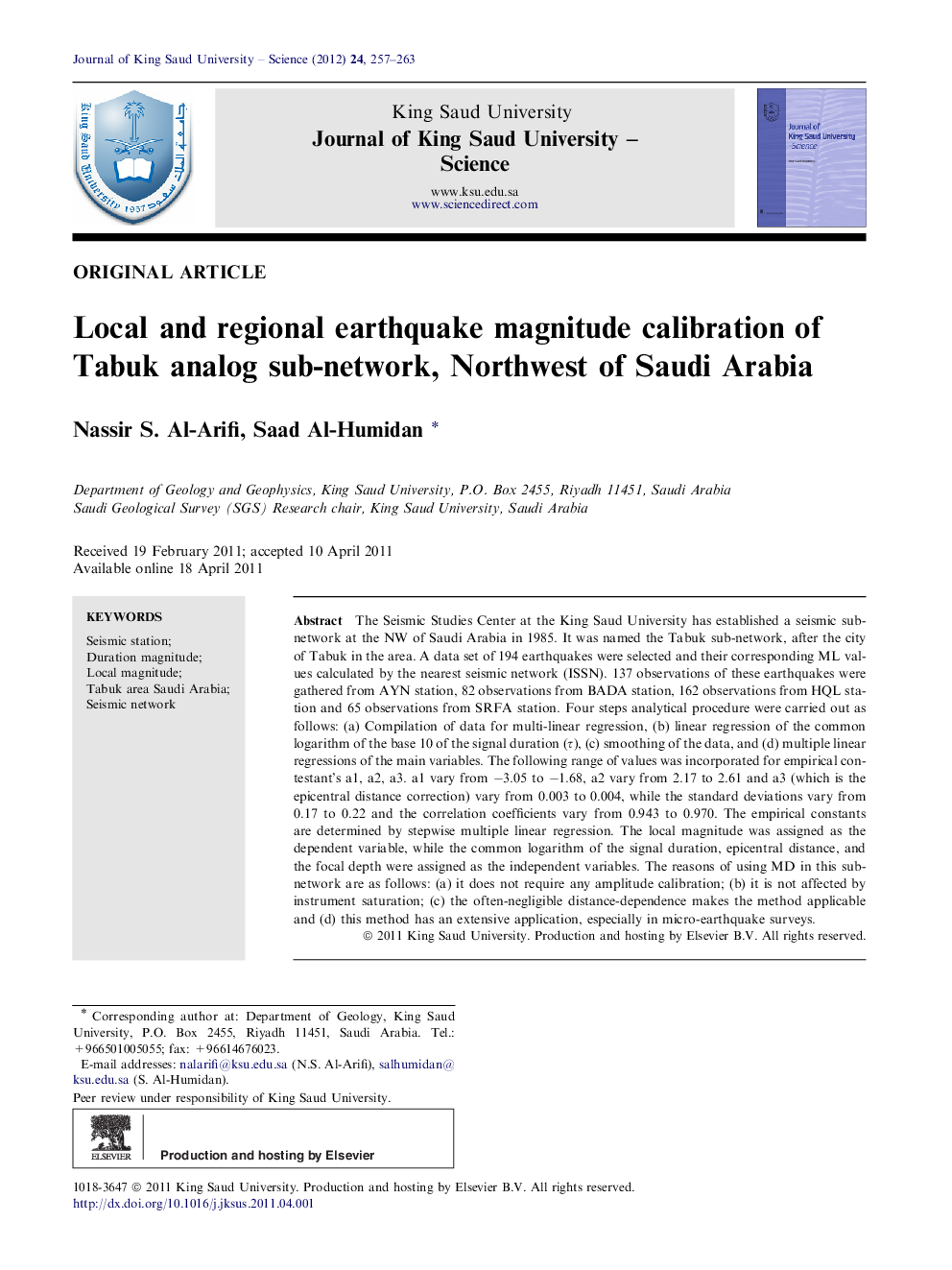| Article ID | Journal | Published Year | Pages | File Type |
|---|---|---|---|---|
| 827492 | Journal of King Saud University - Science | 2012 | 7 Pages |
The Seismic Studies Center at the King Saud University has established a seismic sub-network at the NW of Saudi Arabia in 1985. It was named the Tabuk sub-network, after the city of Tabuk in the area. A data set of 194 earthquakes were selected and their corresponding ML values calculated by the nearest seismic network (ISSN). 137 observations of these earthquakes were gathered from AYN station, 82 observations from BADA station, 162 observations from HQL station and 65 observations from SRFA station. Four steps analytical procedure were carried out as follows: (a) Compilation of data for multi-linear regression, (b) linear regression of the common logarithm of the base 10 of the signal duration (τ), (c) smoothing of the data, and (d) multiple linear regressions of the main variables. The following range of values was incorporated for empirical contestant’s a1, a2, a3. a1 vary from −3.05 to −1.68, a2 vary from 2.17 to 2.61 and a3 (which is the epicentral distance correction) vary from 0.003 to 0.004, while the standard deviations vary from 0.17 to 0.22 and the correlation coefficients vary from 0.943 to 0.970. The empirical constants are determined by stepwise multiple linear regression. The local magnitude was assigned as the dependent variable, while the common logarithm of the signal duration, epicentral distance, and the focal depth were assigned as the independent variables. The reasons of using MD in this sub-network are as follows: (a) it does not require any amplitude calibration; (b) it is not affected by instrument saturation; (c) the often-negligible distance-dependence makes the method applicable and (d) this method has an extensive application, especially in micro-earthquake surveys.
